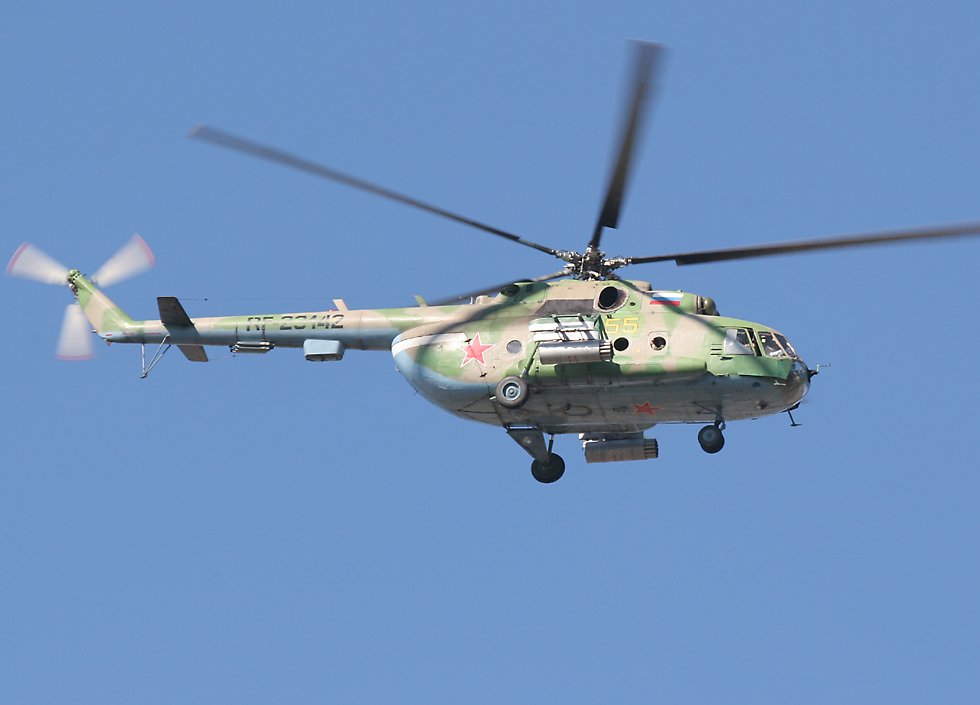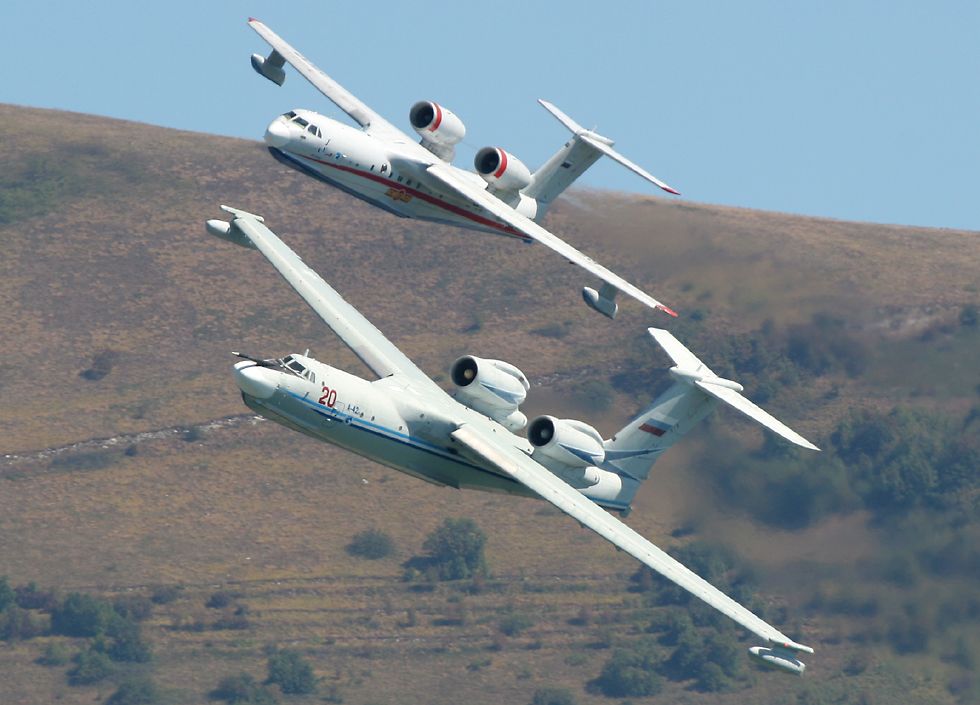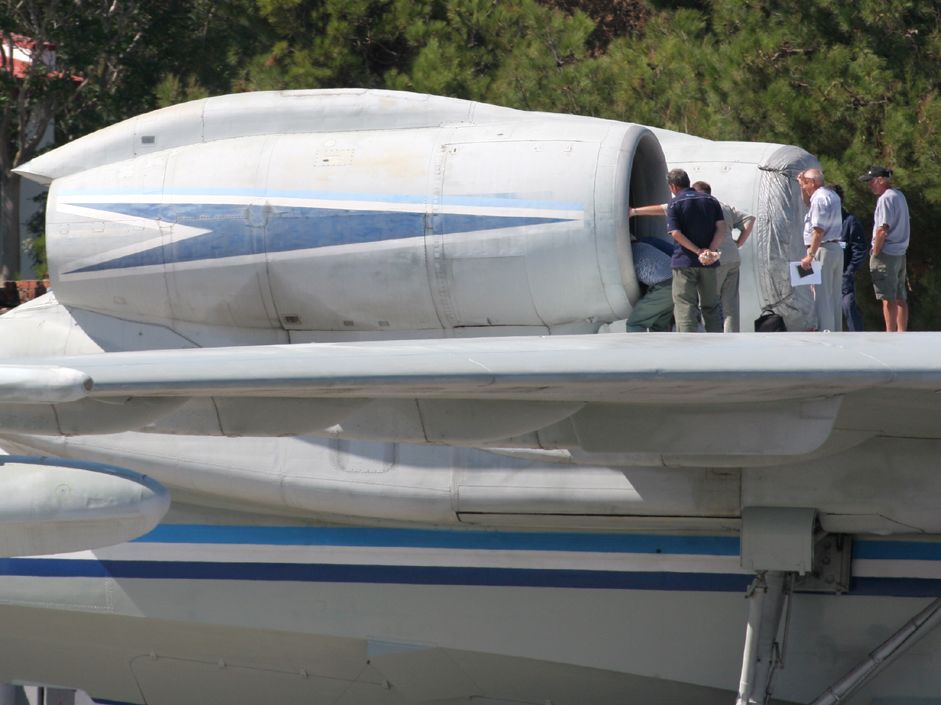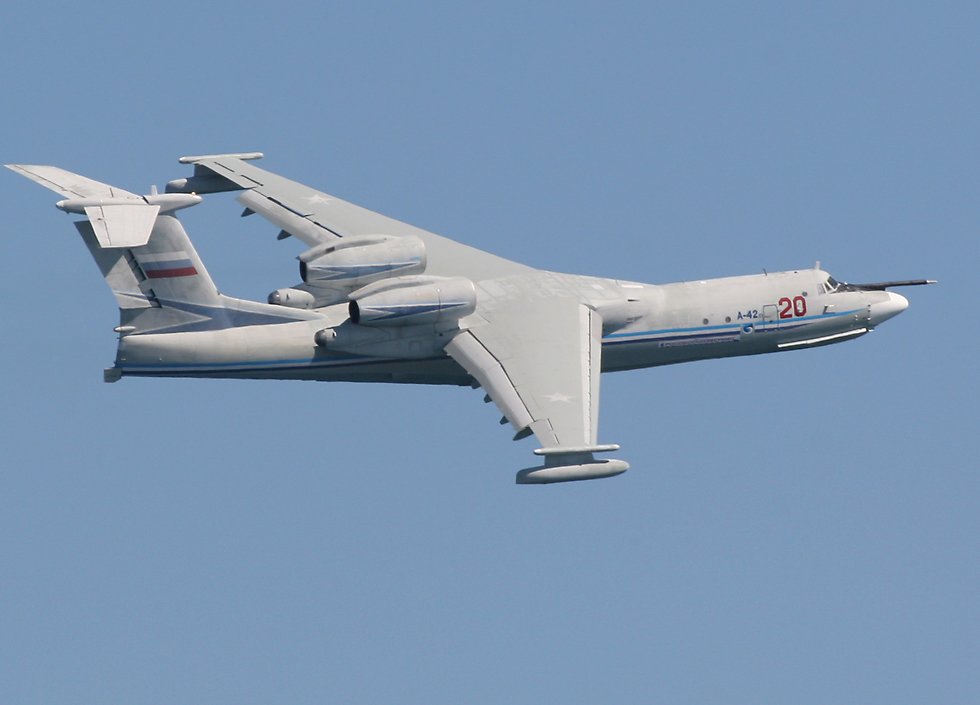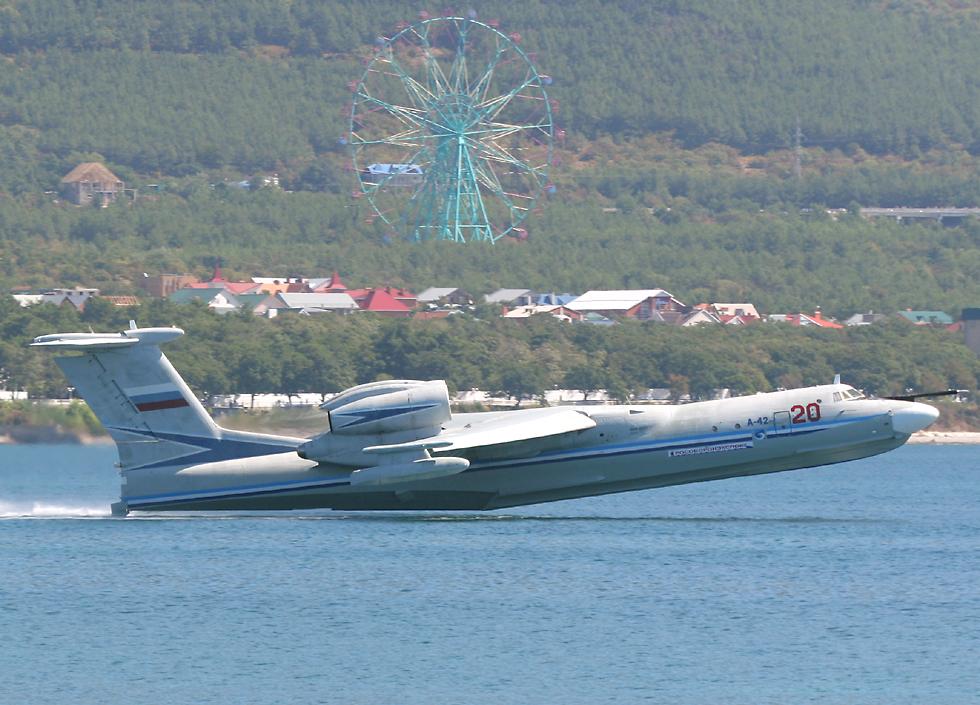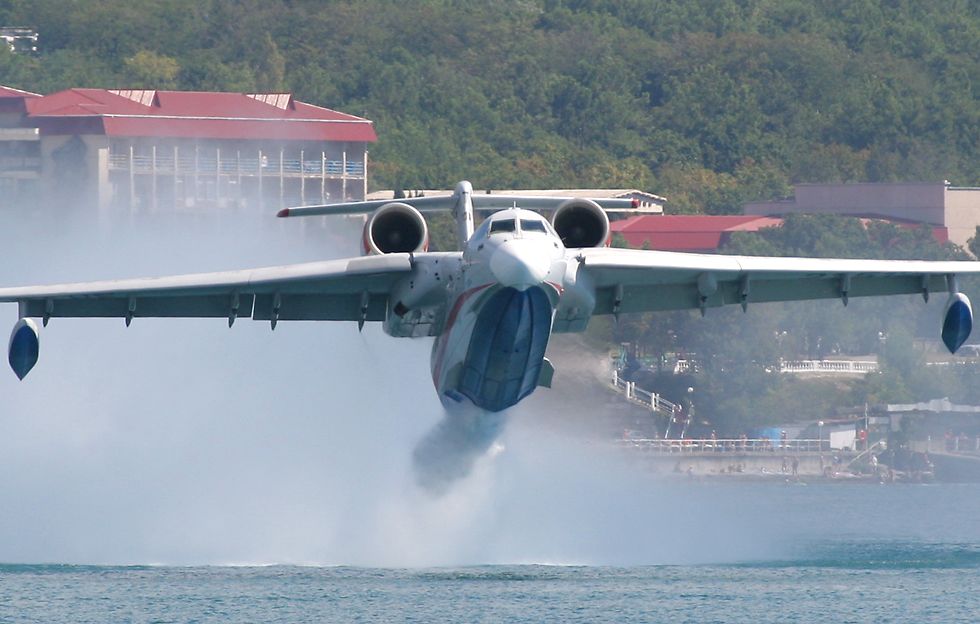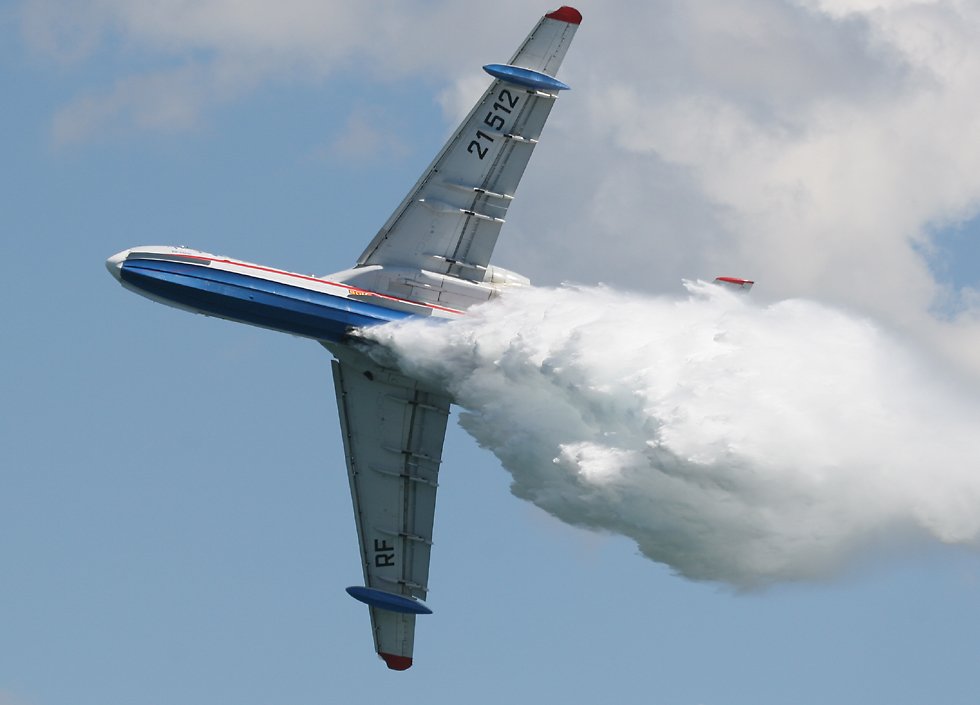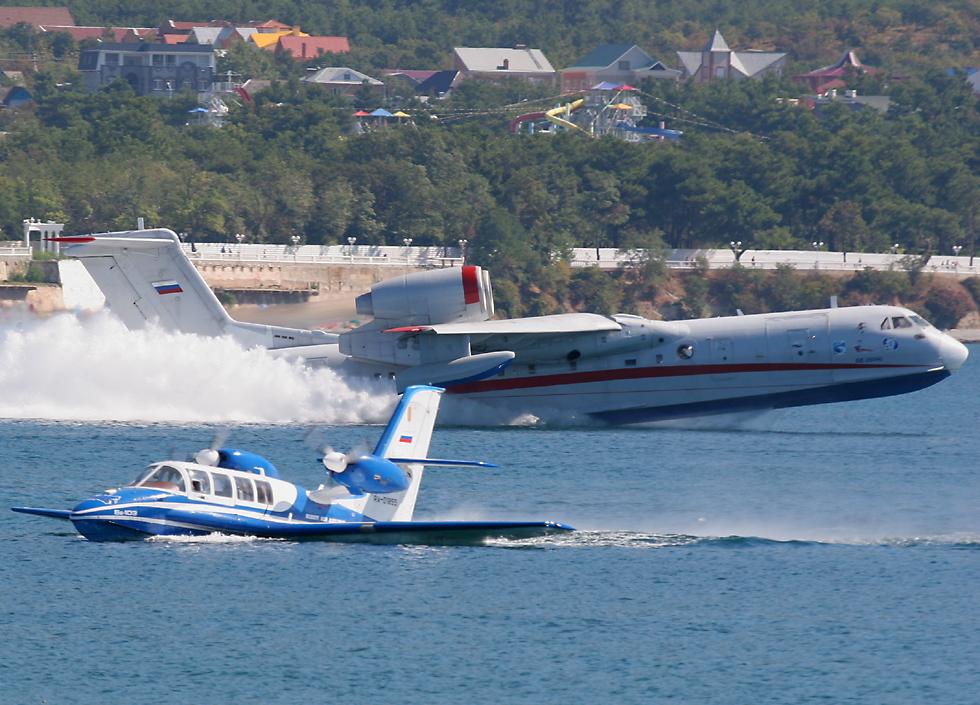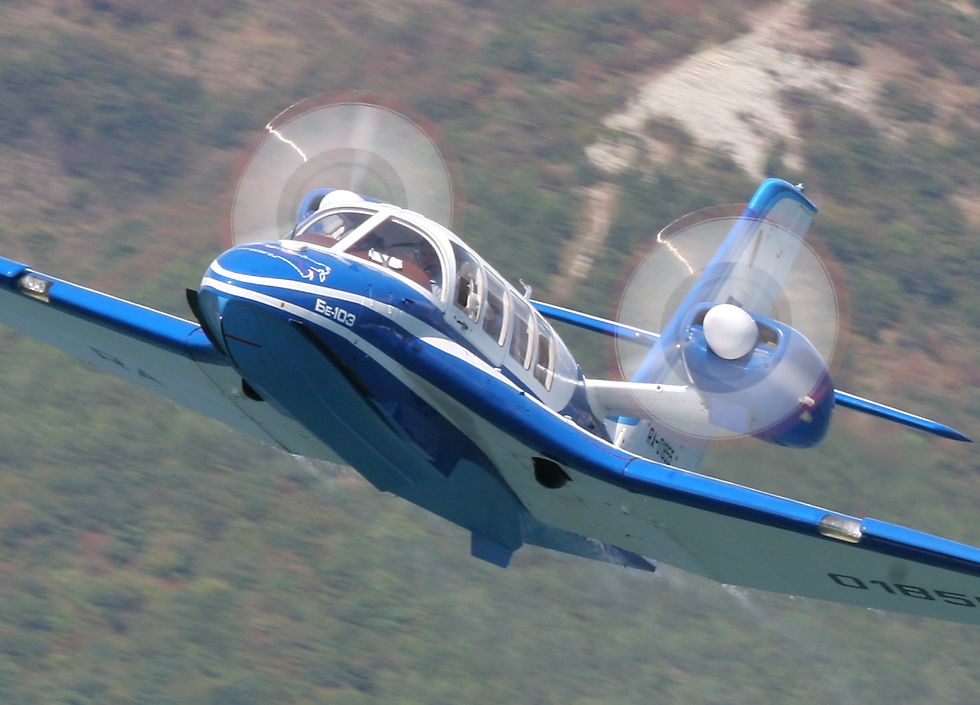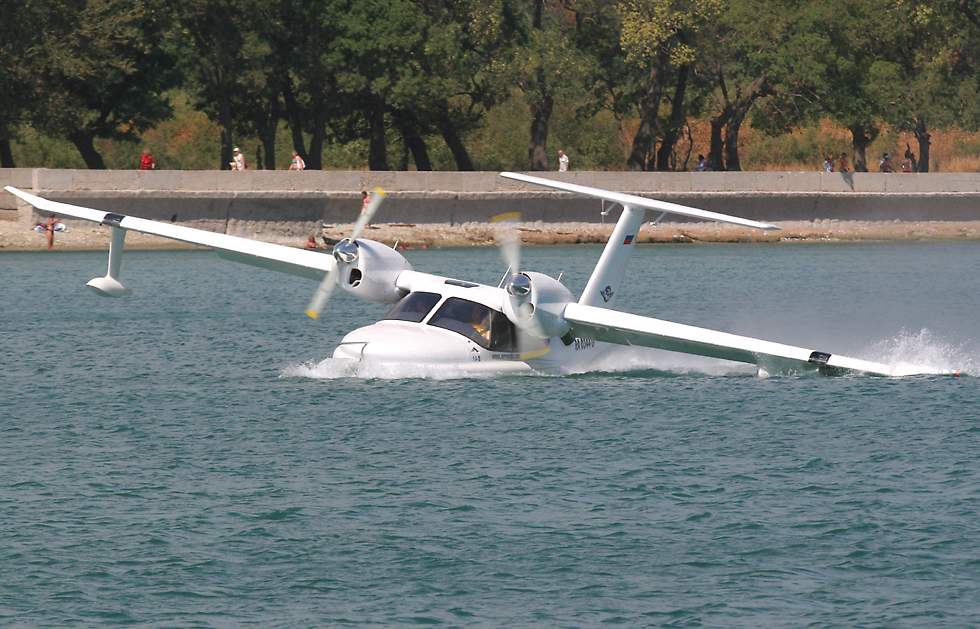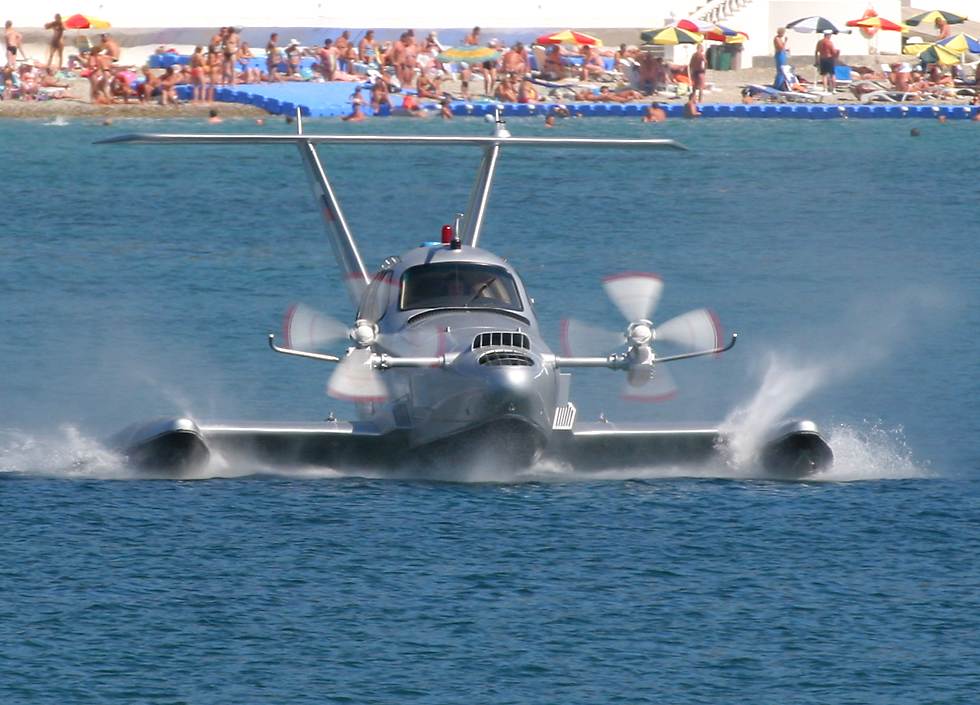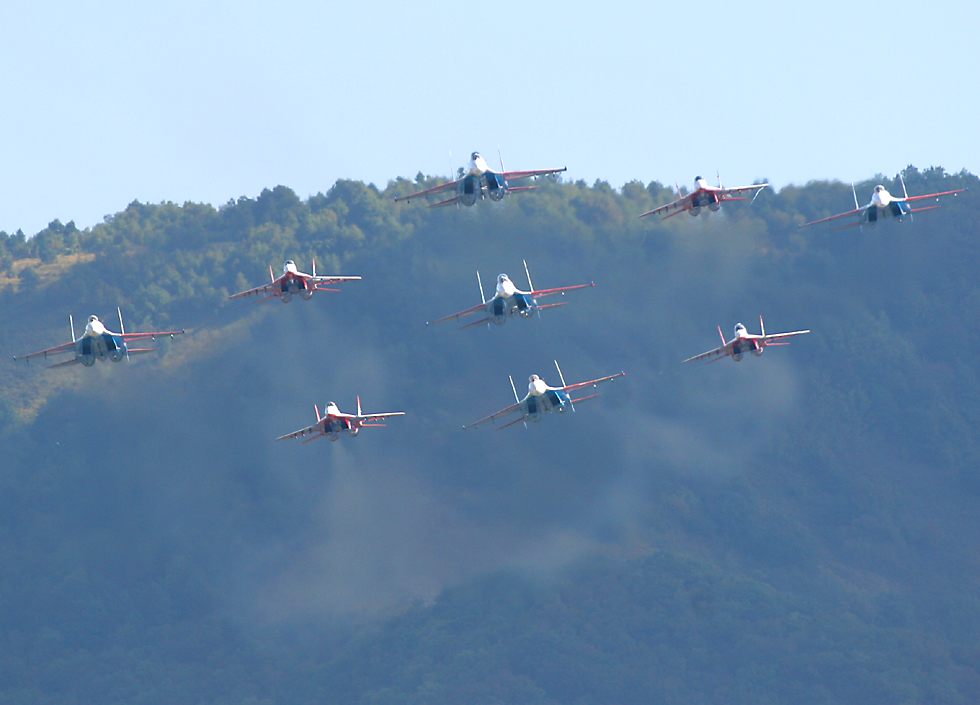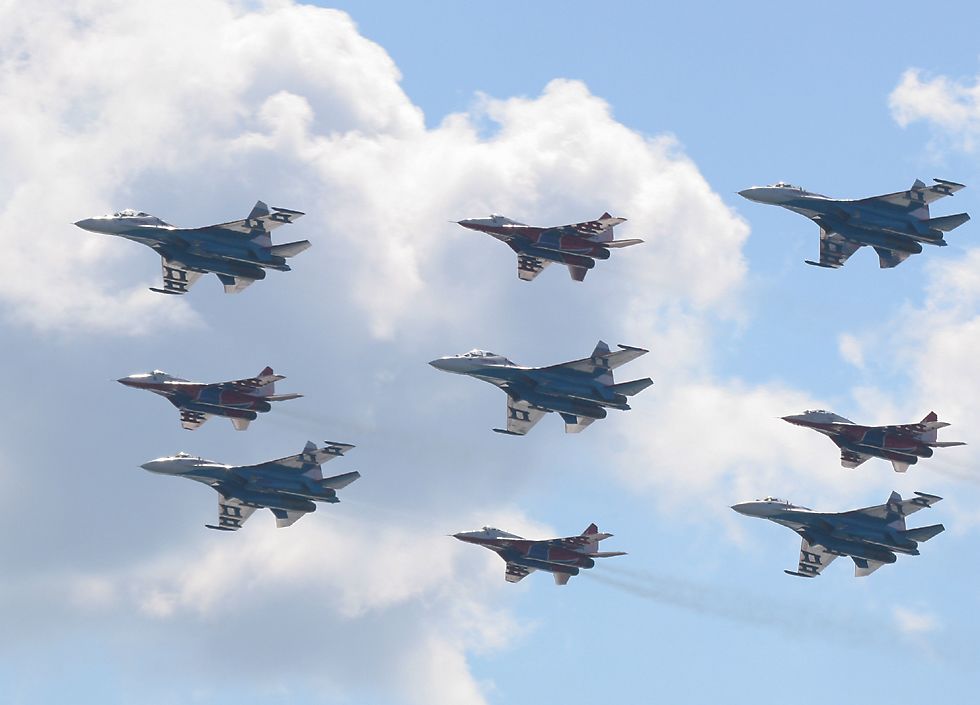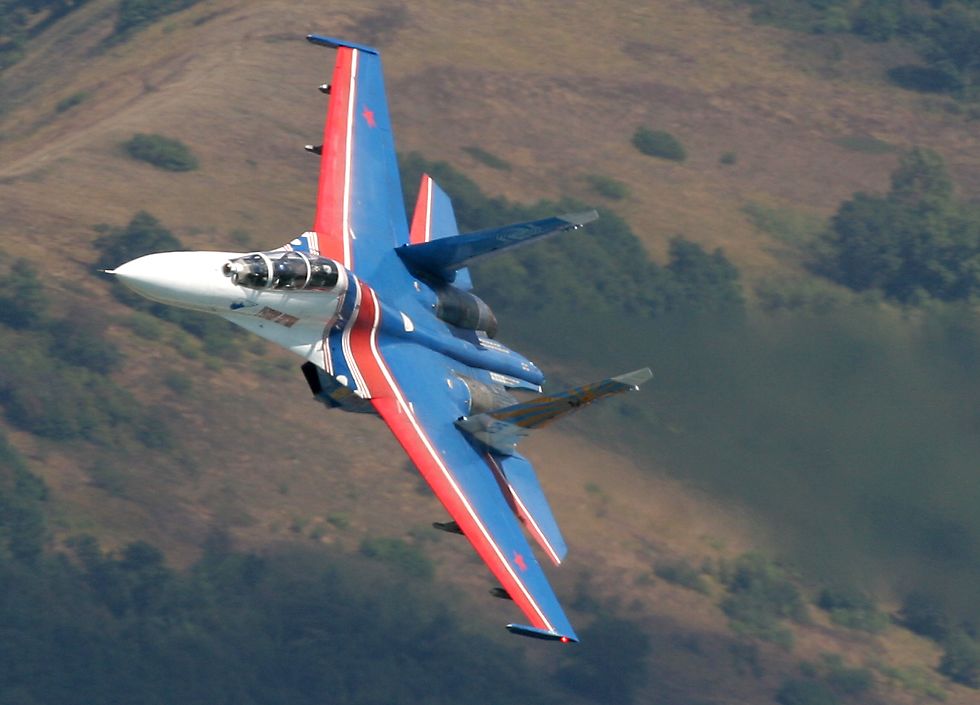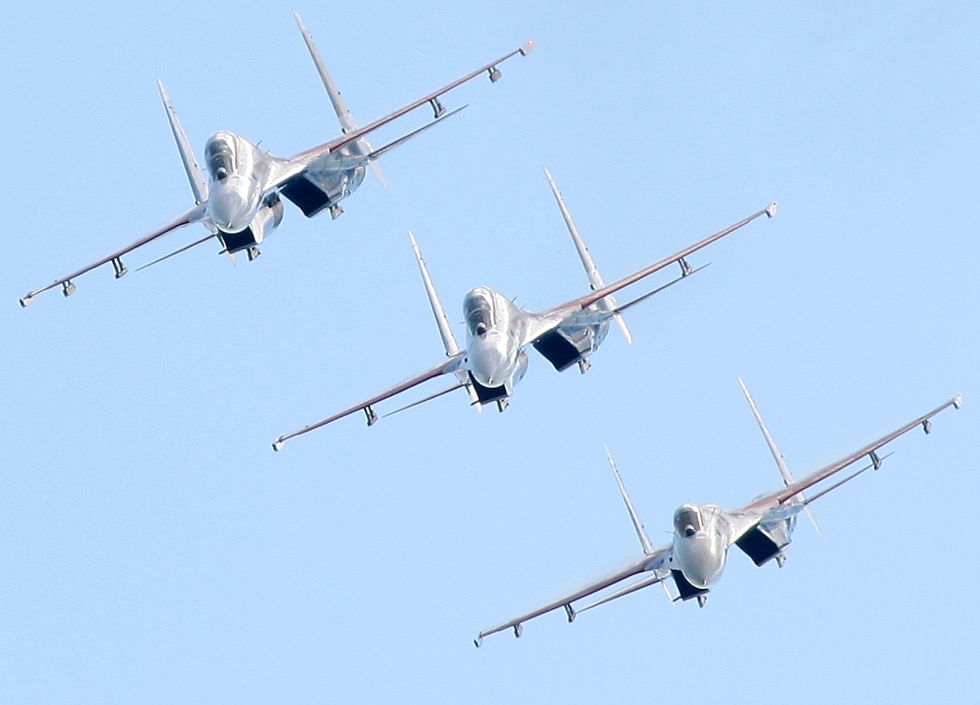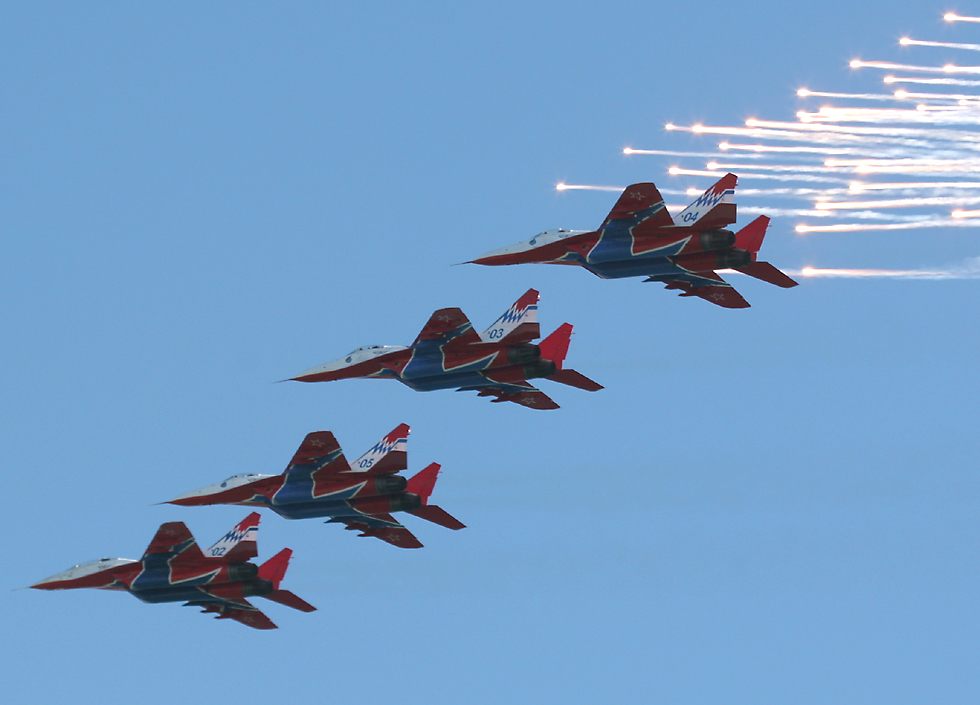Highlights of the 2006 Gidroaviasalon Airshow
|
It was quite an exercise for me to get to Gidroaviasalon ("hydro-aviation exhibition") held at the Beriev test center near Gelendzhik on the Russian Black Sea, a week after the Czech International Air Festival. This pair of Kamov Ka-27 "Helix-A" helicopters opened the show on Tuesday. The Russian-designed Ka-27 might look strange to western eyes, but this is a very successful naval helicopter in service with many foreign countries. The Kamov design bureau specializes in helicopters with contra-rotating rotors, the show advertising said they'd also be displaying the Ka-32, successor to the Ka-27, and a Ka-52 Alligator gunship, but they didn't show up. However if you need a fix of these cool aircraft then you can take a look at several models of Kamov helicopter I photographed at the 2005 MAKS airshow in Moscow. |
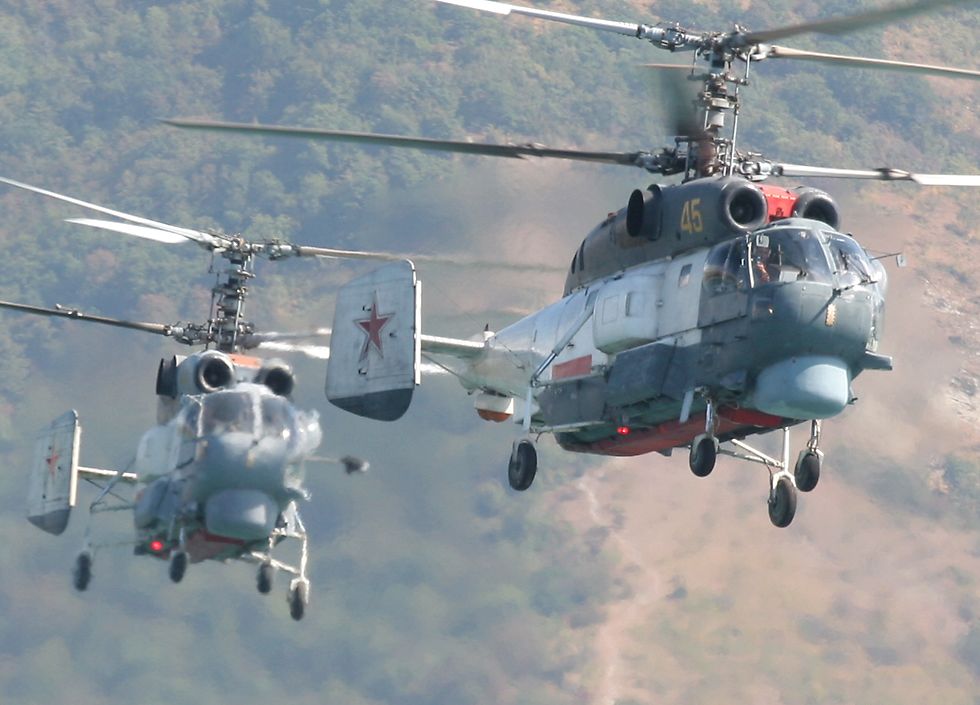
|
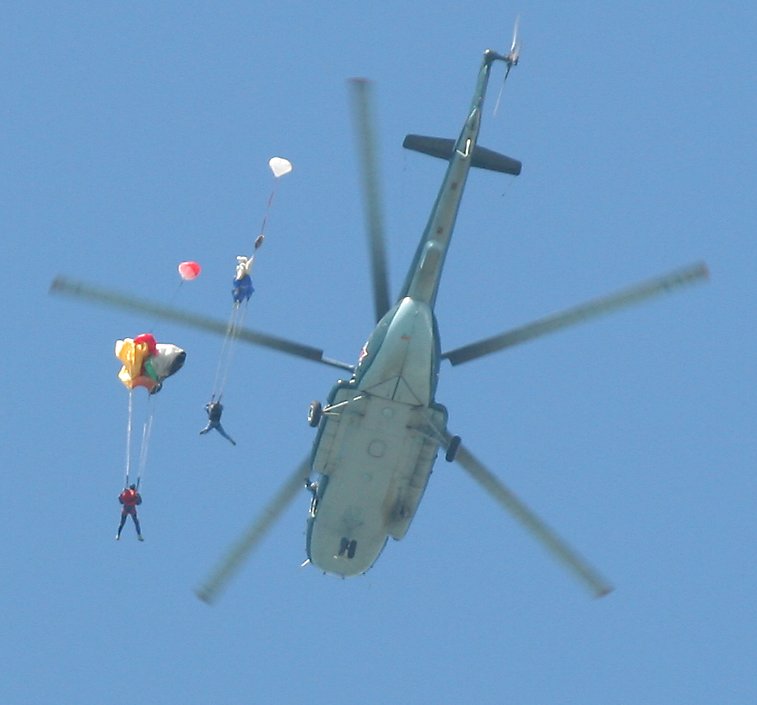
The Ka-27s only flew on the first day of the six-day exhibition, but a Mil Mi-8 "Hip" dropped parachutists at the start of the show on several days. The Mi-8 is one of the most successful helicopters in the world, roughly equivalent to the American UH-1 Iroquois, better known as the "Huey". The Mi-8 is much larger than the UH-1, but is just as versatile and has seen just about as much action around the world, having been exported to more than 50 different countries. As with the Kamovs, so too Mil was supposed to have several other helicopters at the show, including the amphibious Mi-14 "Haze" which was derived from the Mi-8, and the huge Mi-6 "Hook" which was on the schedule to do a fire-fighting display. They didn't come, but you can see an Mi-14 at the Nellis AFB Threat Training Facility, and a couple of Mi-6s, including one in fire-fighting configuration at the Russian air force museum at Monino, near Moscow, and another Mi-6 at the Vietnamese Air Force museum in Hanoi. |
|
Those two large turbofan engines provide a huge amount of power, you can get a real sense of that during its takeoff runs. |
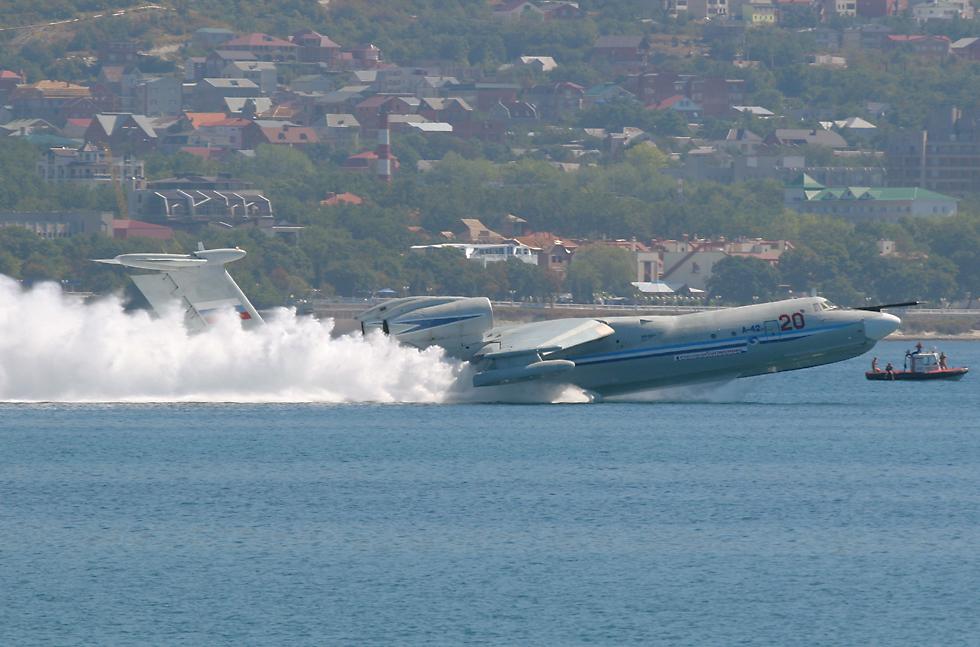
|
|
Unfortunately it's been a hard road for the company to find buyers in spite of the obvious advantages of an amphibian over competing land-based aircraft, perhaps because of unfamiliarity and inherent drawbacks such as greater fuel consumption due to those drag inducing floats and a hull designed more for hydrodynamics than for aerodynamics. At $US25 million an aircraft, the Be-200 costs the same amount as its main competitor, the turbo-prop powered Bombardier CL-415, based on the piston-engined CL-215 which you can see doing a water drop in 2005. Both the Beriev and the Bombardier have an advantage over land-based water bombers by being able to refill on any convenient lake while still moving, but the Be-200 can carry twice as much water as the CL-415, and its higher speed potentially makes it capable of dropping water more often. |
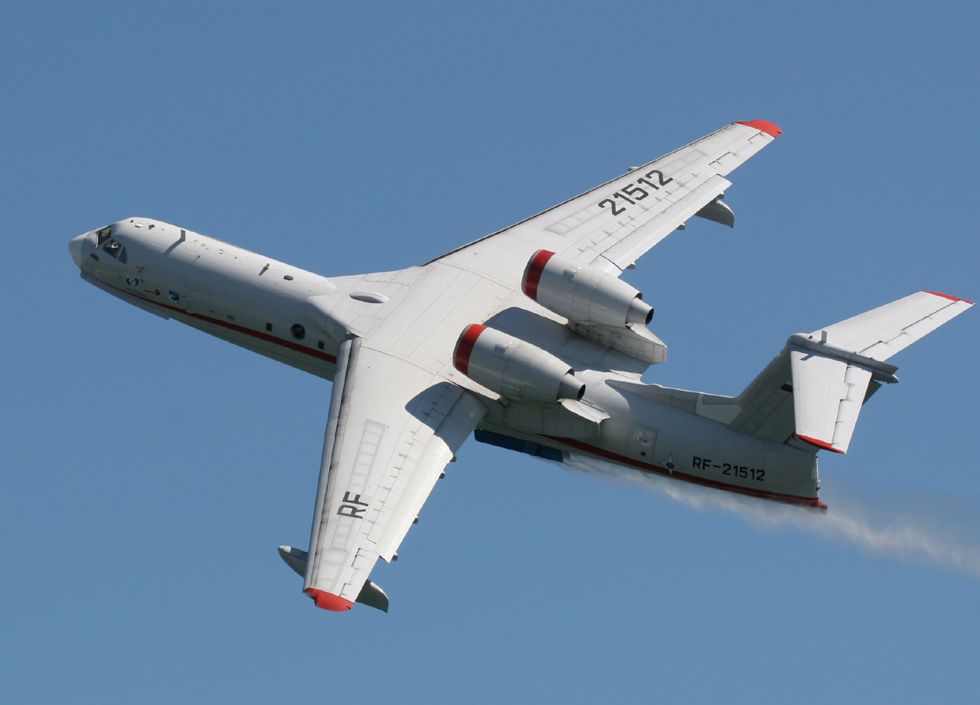 |
|
The Sukhoi is a very attractive aircraft, it looks something like a greyhound, with curves that make it much more aesthetically pleasing than the square and chunky Eagle. |
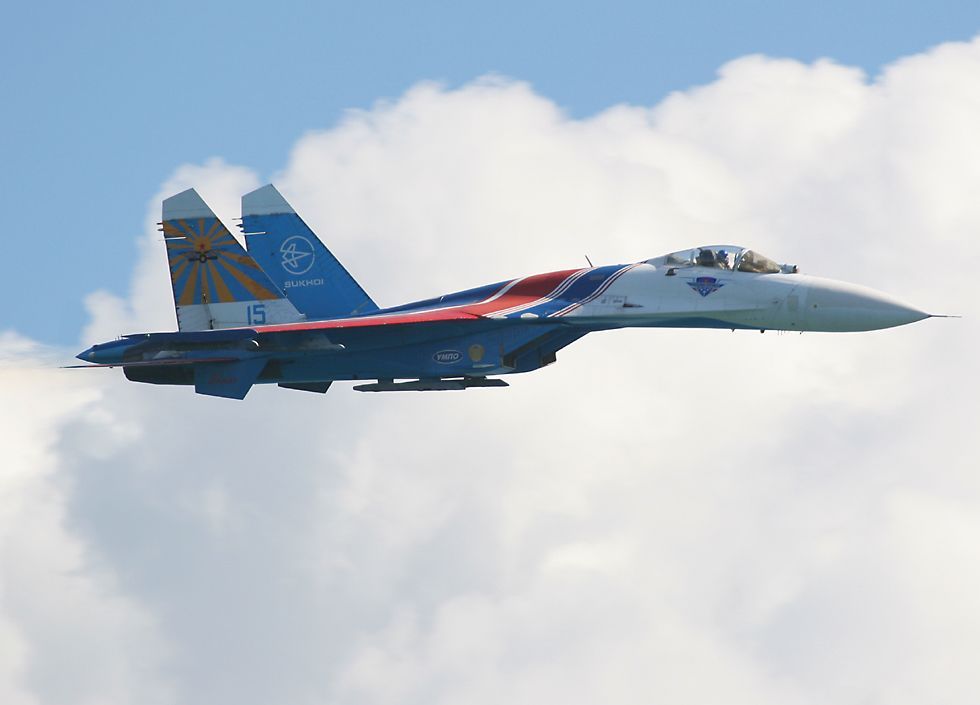 |
|
The Knights do most of the standard airshow maneuvers, including opposing passes... |
 |
|
...and formation breaks... |
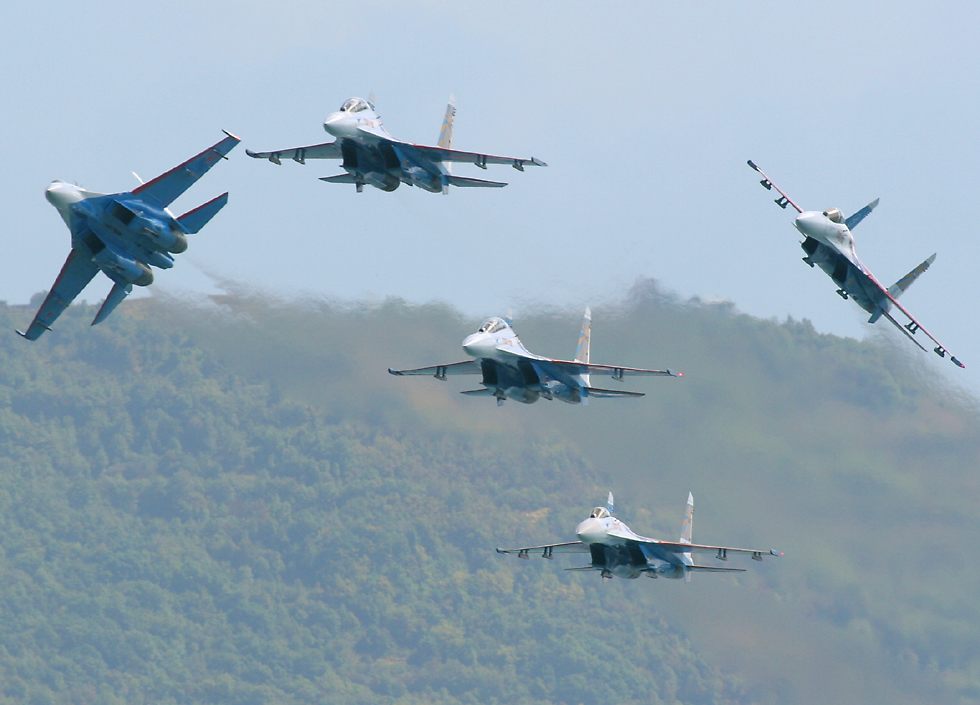 |
|
But they also do stuff that other teams don't do, and that American airshow fans can only dream of, like formation passes with flares... |
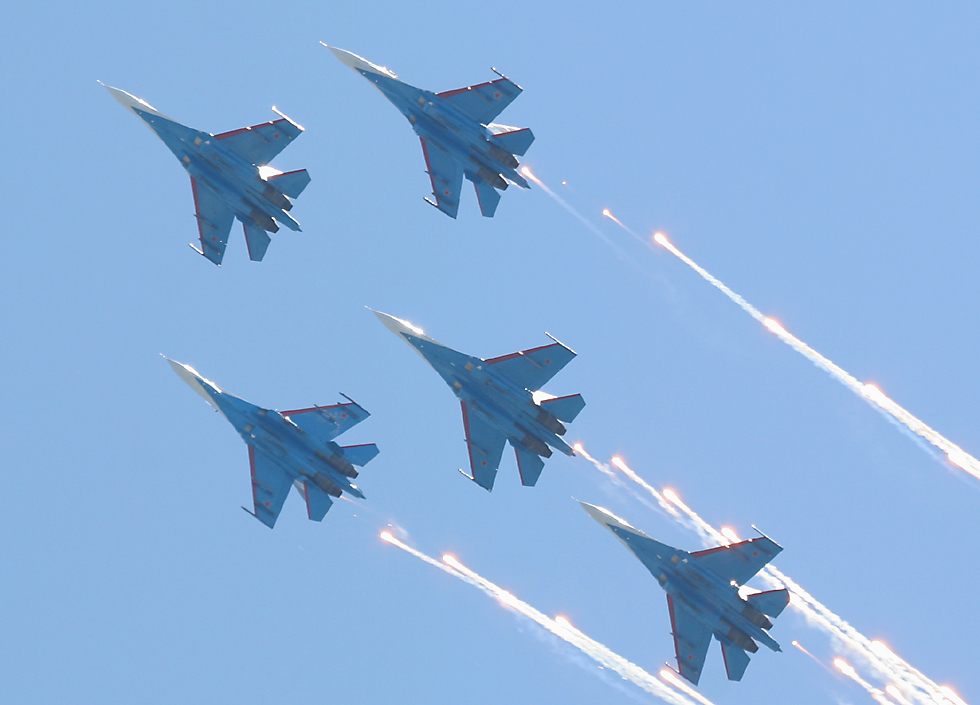 |
|
...and spectacular solo flare routines! |
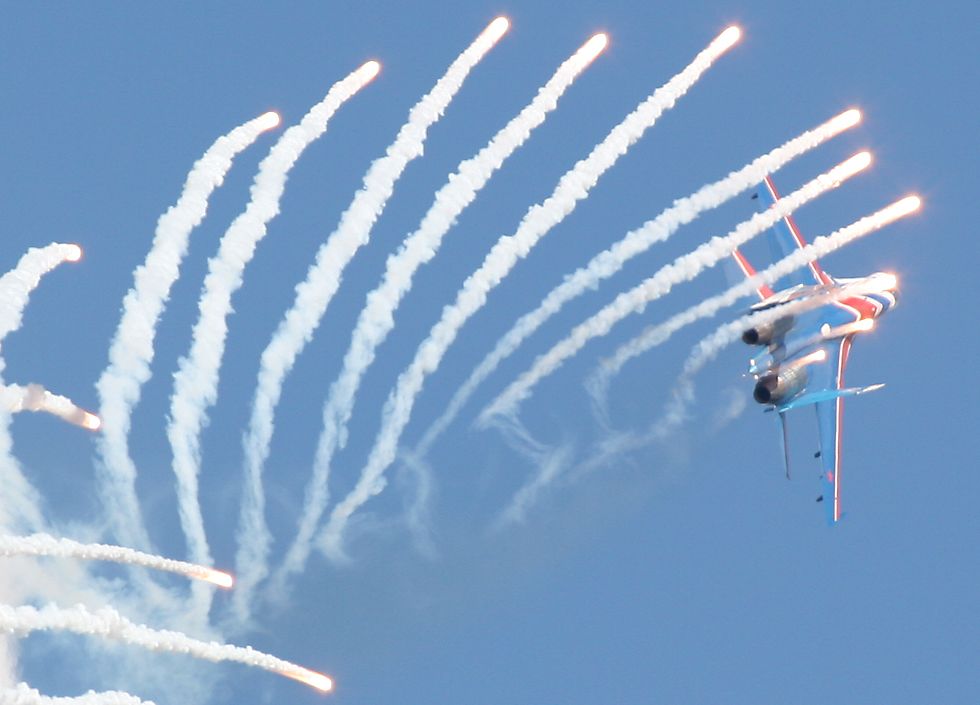 |
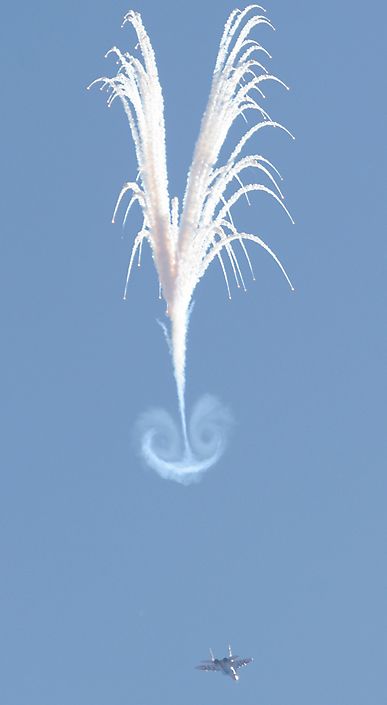
Plus a speciality which you won't see anywhere else, vertical flight up to a stall followed by rapid firing of the flares and a tail-slide, a maneuver which isn't done by any other team. |
